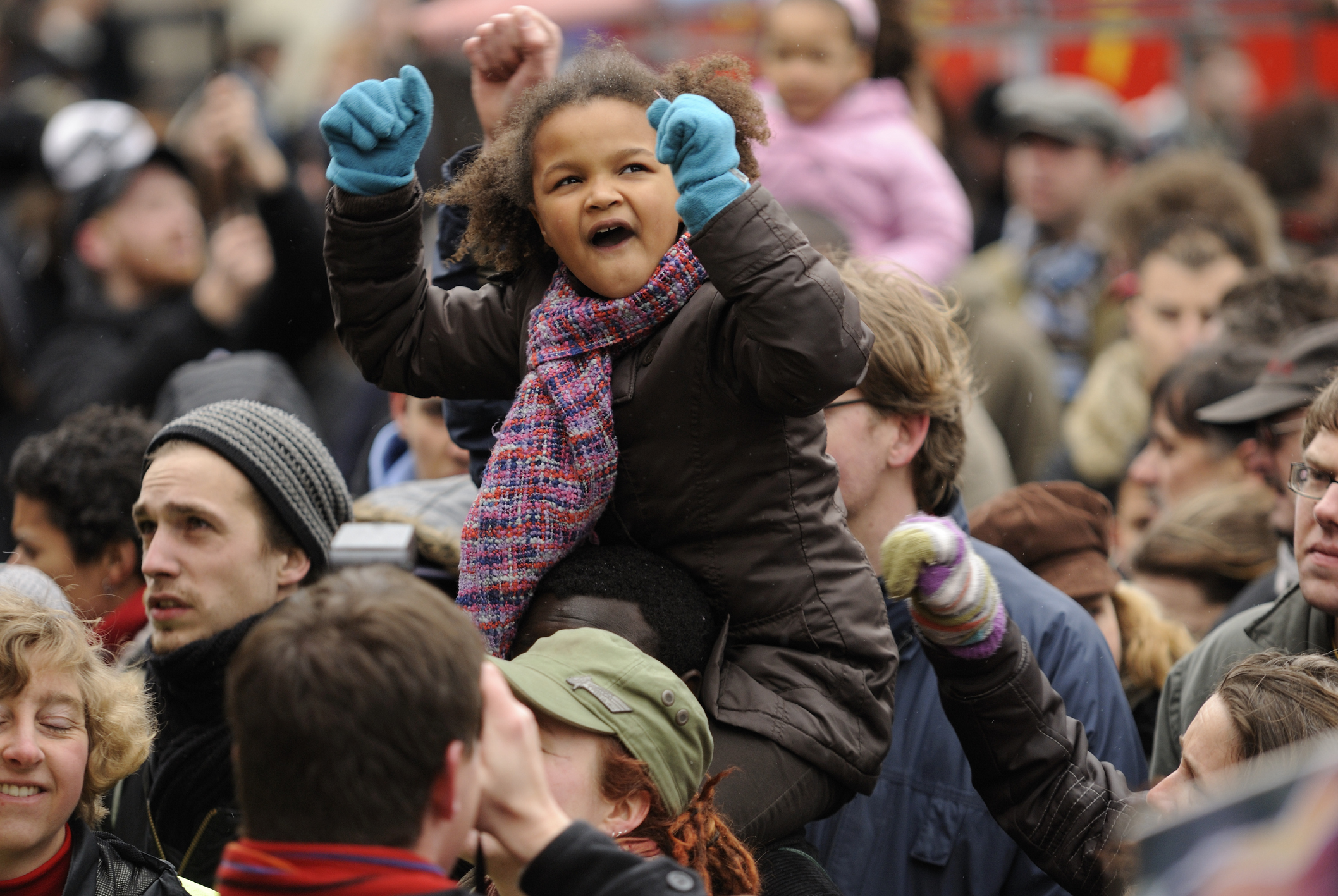
“I have always been vocal about women’s rights and health,” says Dr. Alisha Wilkes of Renton. As such, when a rally and march to support Planned Parenthood was held in Seattle a few years ago, Wilkes wanted to go. She asked her daughters, who were then 15 and 12, if they wanted to attend, too. One did, the other — whom Wilkes describes as more introverted — decided to pass.
Wilkes recalls that, overall, the event was a positive one. “There were many families there — folks of color, different genders. That was exciting for [my daughter] because there is less diversity in the area where we lived,” she says. “We also heard a speech from U.S. Senator Patty Murray; it was helpful for [my daughter] as a young girl interested in politics to see a senator who is a woman.”
Attending such a large event can make lifelong memories, adds Liz Hunter-Keller, chair of public relations for last year's Womxn's March in Seattle. “This is an invaluable experience for kids,” she says. “There is nothing like it. Kids will remember and cherish for their entire lives what a large group of people can do in the face of fear and uncertainty.”
But there can also be plenty of fear and uncertainty as a parent trying to decide if such an event is family-friendly. Big events like this year's Womxn’s March taking place on Saturday, Jan. 20 — which, as of publishing, has more than 22,000 RSVPs on Facebook — can intimidate even the most staunch of supporters when they’ve got a child in tow. But with enough forethought, any large event — be it a parade to celebrate a championship sports team or a political rally — can work with kids.
First, do your research
Safety begins at home long before you decide to attend a large event. If you’re specifically interested in a political event, learn who organized the demonstration, find the schedule of events and the march route and whether the organizers obtained a legal permit. That last one is often an indicator of whether the event will remain orderly and peaceful, according to author Kirsten Anderberg in a series on parenting and protest.
Look for (or ask about) family staging areas, nursing tents, extra porta potties, unblocked march routes and visible volunteer teams. Be sure to check the weather forecast before you go for extra protection against a later meltdown.
Then, prepare yourself
Figure out transportation and have a backup plan in case of last-minute route changes or blocked roads. Don’t pack too heavily and be mindful that misplaced bags can create bomb scares. That said, do bring the things you need to be out all day with your kids (water, snacks, extra layers, sunscreen — you know the deal). Perhaps pack activities to keep kids’ interest when speeches don’t. If your kids are old enough, have them carry their own supplies.
Consider going to the event with other families or partnering with friends without attending children to maintain sufficient supervision of kids in large crowds. Although the goal is always to stick together, some of Anderberg’s sources recommend giving your kids emergency contact cards and even medical waiver forms in case you get separated.
And prepare your kids
Last summer, Tacoma-based nurse Andrea Green and her family joined Green’s coworkers on the picket line during her hospital’s contract negotiations. While Green’s 8-year-old quickly lost interest in the demonstration, her 10-year-old was fascinated by all of the adults seemingly breaking the rules by shouting and walking in the street
“Protesting breaks a lot of social boundaries,” Green says. “We had to talk about why those rules are OK to break in certain circumstances.” To start those kind of conversations with your kids, consider the following:
Before the event
- In an age-appropriate way, explain that the event is about and why you believe it’s important.
- Prepare your kids for what to expect, especially anything that might be frightening, like police in riot gear and people shouting.
- Let them know what is expected of them including how long they may have to stay and how far they’ll have to walk.. Let them know which behavior rules might be relaxed — shouting, walking in the street — and which are iron-clad — no violence, for example.
- Tell them how best to participate. Can they hold signs? Join in any chanting?
- Explain how to recognize volunteers whose job it is to maintain order and assist participants.
- Make sure your kids know to stay with you but explain what to do if you get separated.
The day of the event
- Have kids use the restroom before the event starts.
- Make sure your kids are wearing comfortable shoes, sunscreen, staying hydrated and warm (or cool) enough, just as you do in less stimulating circumstances.
- Be responsive both to your kids and conditions. Pay attention to the individuals and atmosphere around you, and keep an eye on social media to know what’s going on ahead of you.
- Be willing to leave early if kids get scared, overwhelmed or tired. If tension gets high, get out.
- After the event, talk to your kids about it. Tell them about the outcome and get their impressions.
Editor's note: This article was originally published in January 2017. It has been updated for this year's event.











